Over the past 7 years in our institute, I’ve developed a variety of laser optical systems to help others fulfill their research missions. These optical engineering work involves laser alignment, laser beam expanding or shrinking, beam tight focusing, beam multiple focusing, beam bending, beam splitting, beam characterization or verification, etc. It really covers a wide range. However, it seems to me that, all my work could be summarized as the manipulation or transformation technology for the laser beam, that is laser beam shaping. It is not unreasonable, because the nature of laser optical engineering is to shape the laser beam into some specific conditions, so that it could meet the applications’ demands.
Among my past works, the most representative one is a freeform microlens array homogenizing optical system, which was developed for the beam shaping of a 193 nm deep ultraviolet and high power excimer laser in our institute. I say it is the most representative one, because it cost me a great deal of time and effort to develop this optical system, and it was highly praised for the good performance by others. All the components are specially customized. The design process covers various aspects of knowledge in optics and mathematics. I even programmed special algorithm to optimize the design. This piece of work has been published in Optics Express last year. Because of the open-access, you may download a PDF version immediately for review. And in this page, I would like to show you my work details more plainly through pictures and videos.
The excimer laser is powerful and versatile lasing source in the ultraviolet range of the electromagnetic spectra. Because of its high pulse energy, high average power, cold ablation and shorter wavelength, excimer laser has countless applications. However, the original laser beam profile produced by excimer laser always has a complex spatial intensity distribution. Most applications for the excimer laser require the output beam to be modified by homogenizing and then reshaping the beam profile to match the application. Among the existing beam shaping approaches, the well-known type is the microlens array homogenizer, because of its easy use and good performance. An optical schematic illustration of this kind of system is shown by the animation below.
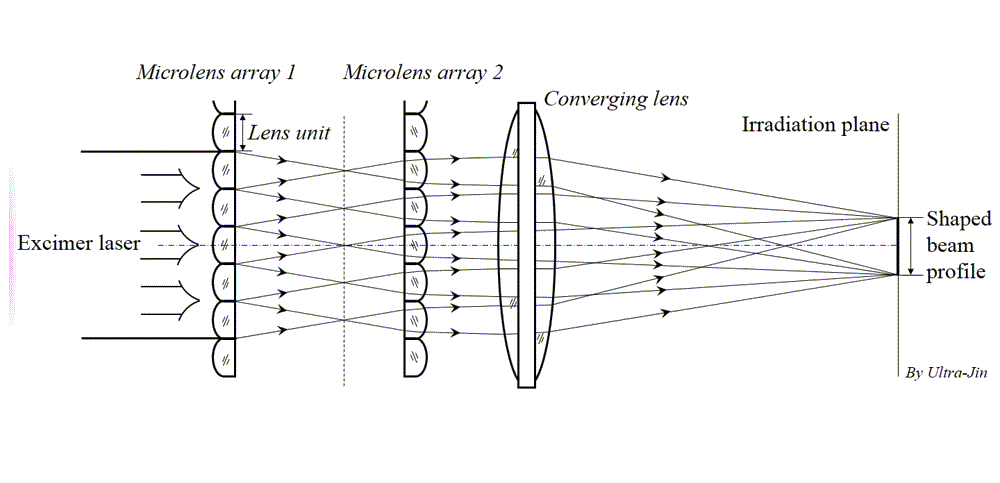
The microlens array homogenizer belongs to multi-aperture beam integration systems. Once the laser beam incident upon the optics, it will be divided into smaller sub-beamlets, then these sub-beamlets will be converged and superimposed at the same position of the irradiation plane, so that the re-integrated beam profile could have a better uniformity and shape than the original. Although this separation to integration mechanism looks seemingly simple, it plays a crucial role in some cutting-edge laser technologies, such as laser-driven inertial confinement fusion (ICF) or multiple laser cooling. It is easy to imagine that, the more beamlets be separated, the more prominent superposition effect will have, and the better quality or uniformity for the irradiation should be achieved. However, the reality is always not what it seems. The more microlenses used to split the beam means that the smaller aperture of the microlens unit in the array should be, and that will bring an undesirable increase of diffraction effects, which can affect the beam shaping result significantly. Moreover, the size of the shaped beam profile will be reduced dramatically. The following pictures shows the beam shaping result created by conventional microlens array homogenizer.
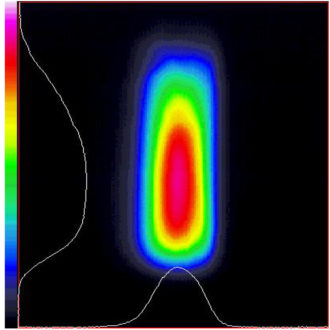
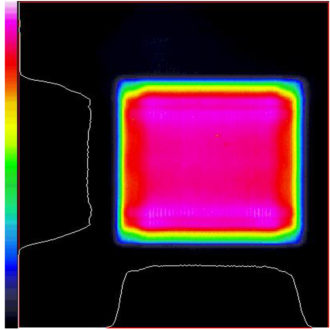
M. Zimmermann, N. Lindlein, R. Voelkel, and K. J. Weible, “Microlens laser beam homogenizer – from theory to application,” Proc. SPIE 6663, 666302 (2007).
This system employs regular microlens arrays with the unit aperture of 300×300μm2,and could create a 7.5×7.5 mm² square flat-top beam profile with uniformity of better than ± 5% at the work distance of 175 mm. Objectively speaking, the result is fairly good. However, if you observe the figure carefully, you may notice some energy fluctuation inside the beam profile, and some energy diffusion from the edge. This is mainly caused by the diffraction effects at the small microlens apertures. Besides, the shaped beam profile is tiny, only 7.5×7.5 mm². This is not beneficial for the further using.
Could we improve this situation with some novel optical design? The answer is yes, and the idea is not so complex. In my opinion, the traditional design of the microlens array homogenizer only considers the energy transformation and redistribution in the base unit of the beamlet, it ignores the variability of the beamlet itself. Actually, in the beam shaping, each beamlet itself introduces a modulation of the flat-top intensity. In other words, the intensity distribution involved in each beamlet is directly related to the uniformity of homogenized beam profile, as shown in the following picture.

In order to take advantage of this point, I came up with a solution that by employing freeform microlenses, one may compensate all drawbacks. I aim to conduct some special design for each freeform surface in the array, so that it could introduce appropriate aberrations in the wave front of the beamlet, and redistribute the irradiance correspondingly, then finally improve the uniformity of the overlapped beam profile. Although my idea is very simple, it is really hard to realize it. First, theoretically, the freeform optical design can only be based on specified light sources and desired target illuminations. Unfortunately, at present, there is not available mathematical equations to describe excimer laser’s propagation in space. Second, the computation for the multiple freeform surfaces is a huge work, which could not be realized if no very efficient way.
As a response to the difficulties, I decided to collect the real intensity distribution for the excimer laser as a fundamental basis for the optical design. As the quantification of the spatial intensity distribution of the initial beam profile, the design work can be translated into an optimization problem. Then in order to make the optimization be technically feasible, I applied a step-by-step strategy, which specified each couple of axisymmetric beamlets as the analysis target, only take the two corresponding microlenses in array 1 into consideration during one step optimization, as shown in the following picture. Then by repeating this method to each couple of beamlets in the beam from part to whole, the uniformity of the integral beam profile can be improved dramatically.
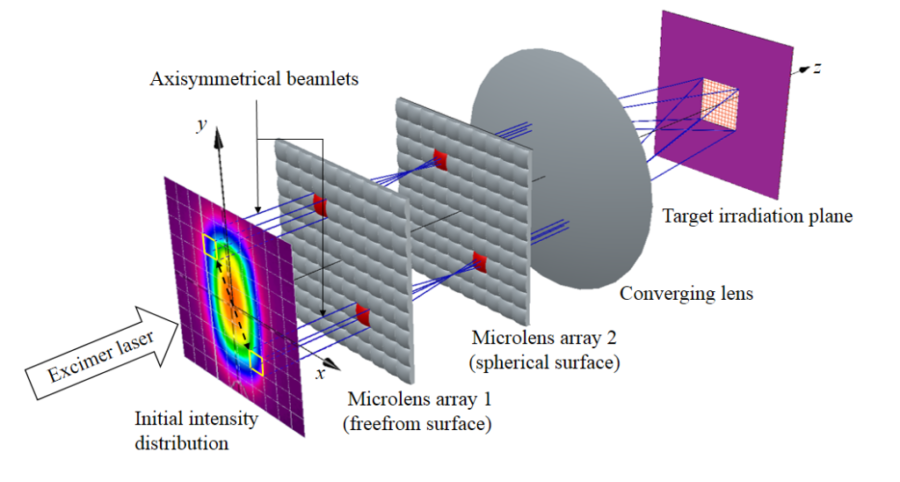
Moreover, to relieve the computational complexity further in the iterative optimization, I employed the Chebyshev polynomials to characterize the freeform surface of the microlens unit, instead of the spatial control points. This is could be regarded as a trick in mathematics. At the beginning of the optimization, we can use only several Chebyshev polynomials to represent a freeform surface roughly, and as the running of the iterative computation, gradually adding the polynomials to represent the surface more precisely. When the computation is too heavy to take a step, we have already gotten what we want, a very precise freeform surface. This is far superior to taking a huge amount of parameters into every iteration.
Actually, to realize the above idea and the optimization, I programmed special algorithm based on Powell’s method, which is known as its robustness and effectiveness. I have to do so because it cannot be achieved by any commercial software. Fortunately, it really works and helped me complete this whole design work. Here are some simulations are shown in the following pictures which were done in Zemax OpticStudio. These simulations can show you the mechanism more intuitively.



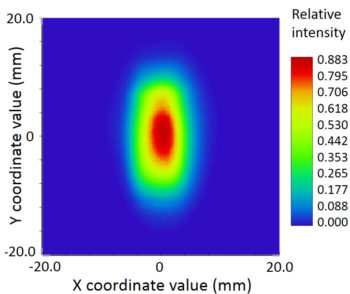

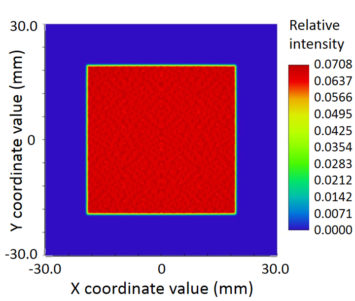
You may have wondered what this optical system looks like and what its practical performance. Sorry for having you read my long statement above, I just want to express to you the hard efforts I have paid on it. The appearance of this awesome system is shown in the following pictures.
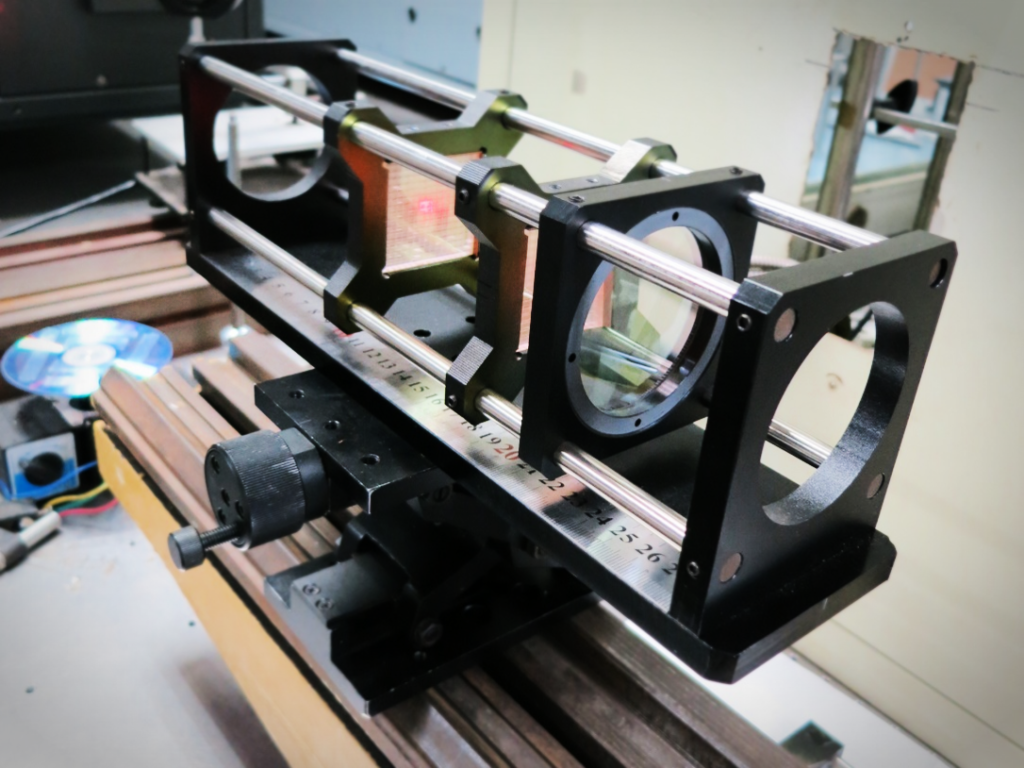
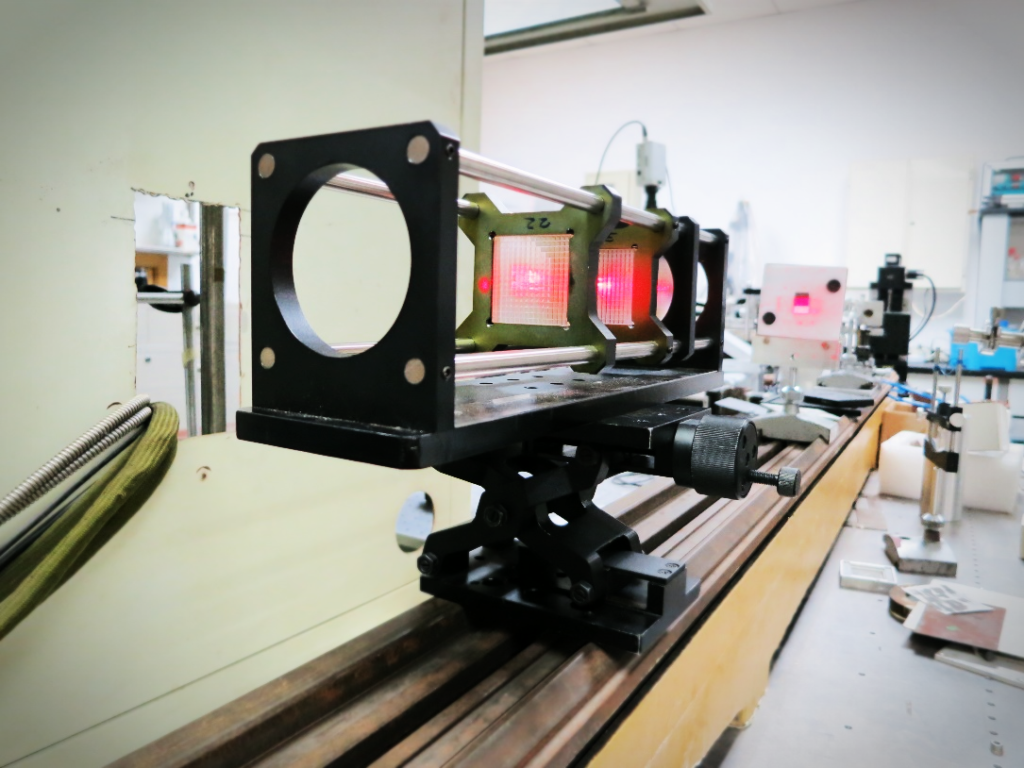
In this optical system, every component is designed by myself, even if a screw. The optical material was customized from Heraeus Group in Germany, for having a low absorption and degradation at the deep ultraviolet wavelength. The effective freeform microlenses are 4 × 8 (horizontal vs. vertical) with microlens unit aperture of 4×4 mm2, which were customized by Carl Zeiss AG in Germany, for achieving a high accuracy and resolution corresponded to my design. Besides, to keep the optical components aligning well to each other, they all are assembled into a high-precision mechanical cage system setup, which is fabricated by an Original Equipment Manufacturer (OEM) serving for Apple.
Because the DUV excimer laser is not visible, in order to show you the performance of this optical system intuitively, I placed UV light-sensitive paper to suffer the irradiation immediately before and after beam shaping. The photos are shown below. The light-sensitive paper could act as the photographic film which is very sensitive to the UV light, and can display the exposure intensity very intuitively.
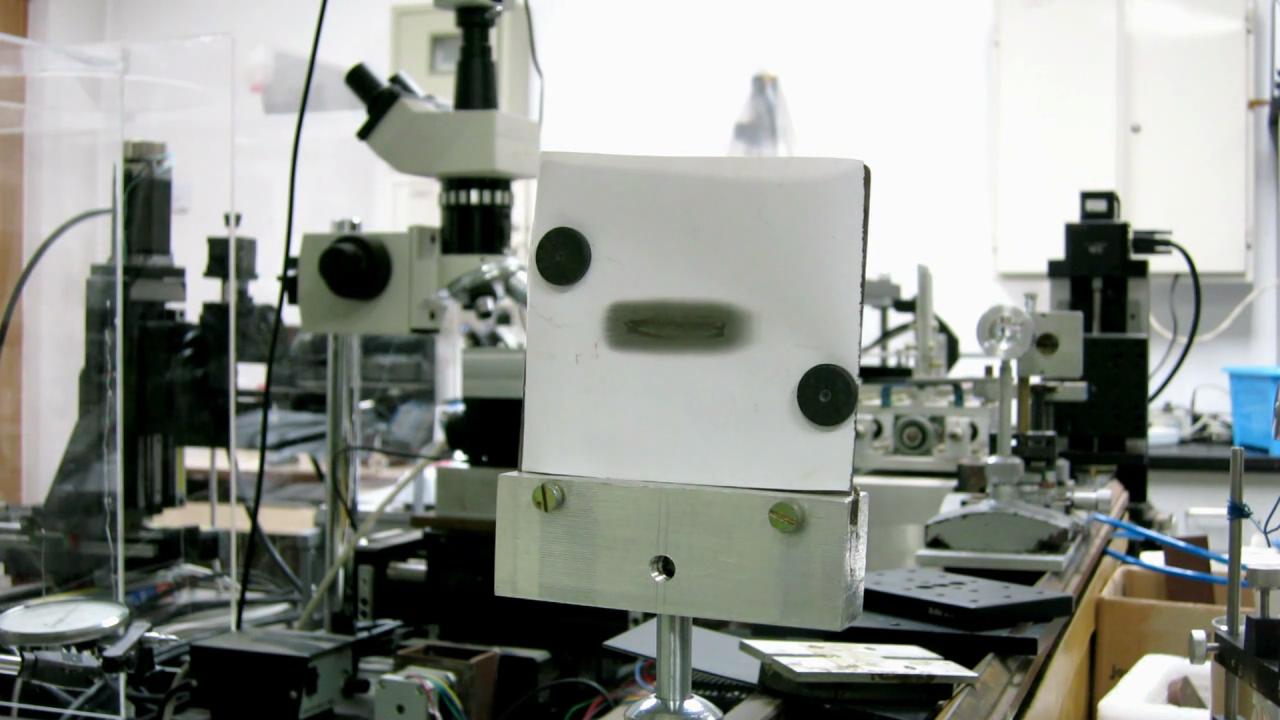
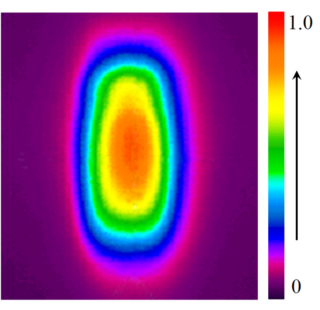
Because of the non-uniform energy intensity distribution of the excimer laser raw beam, the ablated mark is rendered as an ellipse pattern with complex ripples inside. The energy is mainly concentrated in the center, not all the irradiation area.
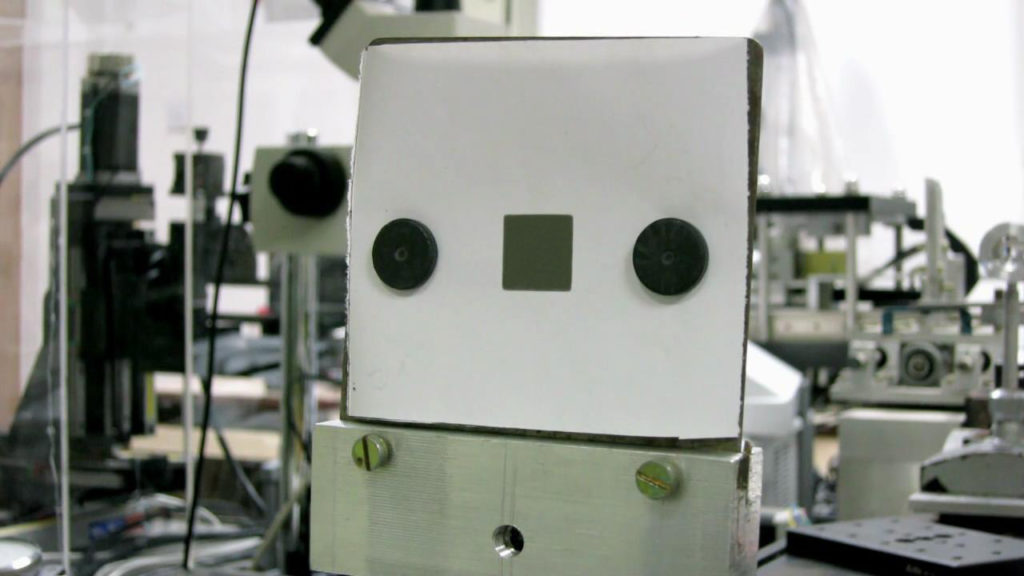

Then after beam shaping, the beam becomes an extreme highly uniform square pattern. You can see clearly that the ablation pattern is very uniform and accompanied by sharp edges. This proves the energy has been redistributed in all the irradiation area.
Comparing these two ablation results, you may have felt the power of my beam shaping system visually. Then let me give you some specific data to impress you more. Not only the shaped beam profile has a large size of 40×40 mm2, but also the beam uniformity can be stabilized within ± 1.5 %!!! More valuable is these all are realized at a short distance of only 200 mm. This is hard to achieve by any conventional methods.
Actually, to achieve a good uniformity as our freeform design by conventional one, the aperture of the microlens unit cell should be decreased to micron scale, and correspondingly increasing the amount of the microlenses in thousands, which raises difficulties for fabrication. And to acquire an equivalent illumination with the same size as the freeform one creates, the working distance should be extended by many times. It’s not beneficial to the compactness for the system integration. If not so, the large scale illumination at the relatively nearby distance has to rely on other magnifying optics. However, the diffraction effect caused by the small aperture of the microlens unit cell will also be magnified, and that can lead to significant diffusion and fluctuation for the energy of the beam profile edge. Besides these, the tiny apertures enhance the consequence of misalignment which is unavoidable during practical applications, and that can also give negative effect for the result. Whereas my design can effectively avoid these problems, thus can provide much better beam shaping results.
By the way, my work has been recognized by other peers. Recently another paper published in Optics Express cited my work, this group comes from the Handong Global University in Korea. In the paper, they give my work an evaluation like this:
“As a countermeasure to this problem, a freeform microlens array homogenizer was recently proposed. This system showed excellent performance in uniformity and steepness…” Seungjin Hwang, Taeshin Kim, Jongmin Lee, and Tae Jun Yu, “Design of square-shaped beam homogenizer for petawatt-class Ti: sapphire amplifier,” Opt. Express 25, 9511-9520 (2017)
This beam shaping system has paved the way for other higher caliber research. Our group has been using my optical system to conduct some far advanced laser processing technologies. My foreign partner, Ali Hassan, who is an energetic young scientist, also working at our institute, with the help of my optical system, he has gained some significant findings in developing new photoelectric materials. The related research papers have been submitted and now on the way.
I’ll show you more in this page if the results could be accepted. I have the confidence they will be recognized because the optical system designed by me is the unique one in this world.
Thank you for taking the time to read this long post. At present, I’m devoting myself to develop dynamic laser pulse shaping technology. I wish to realize an ultra-high-performance beam shaping system with more flexibility and adaptability in the future, and that may take my research into another further step. To be honest, I cannot wait to show you more about my idea and my optical system. And if you are interested, please just look out for my further research. I promise you I will never let you down!!!

